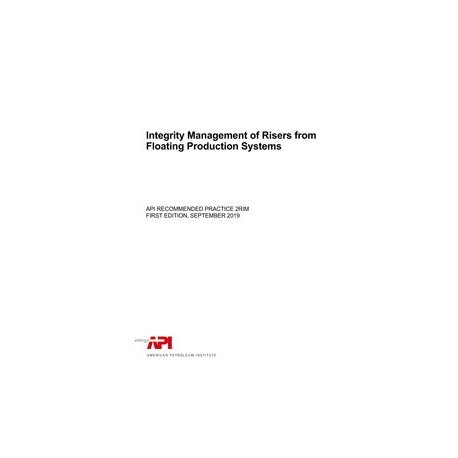Cart
0
Product
Products
(empty)
No products
To be determined
Shipping
$0.00
Total
Product successfully added to your shopping cart
Quantity
Total
There are 0 items in your cart.
There is 1 item in your cart.
Total products
Total shipping
To be determined
Total
New
Reduced price!
 View larger
View larger
 View larger
View larger
API RP 2RIM
M00021408
New product
API RP 2RIM Integrity Management of Risers from Floating Production Systems, First Edition
standard by American Petroleum Institute, 09/01/2019
In stock
More info
Full Description
This recommended practice (RP) provides guidance for the integrity management (IM) of risers connected to a permanent floating production system (FPS) used for the drilling, development, production, and storage of hydrocarbons in offshore areas.For the purposes of this recommended practice, a riser has a top boundary that is somewhere at or above the point where it transfers load to the platform structure, and it has a lower boundary where it transfers load into a foundation, which could be a wellhead, pipeline, or subsea structure.
The scope of this RP includes: structural components of the riser; riser top hang-off assembly (i.e. stress joint, flexible joint, tensioner system/air can, bend stiffener); appurtenances attached to the riser that are critical to its integrity, including VIV suppression devices and buoyancy modules used to support the riser in any capacity; corrosion protection systems; insulation; other components in the load path or supporting the riser. The scope of this RP specifically does not include: structural support for the riser on the host platform (i.e. riser porch, pull tube, tensioner support structure); wellhead or subsea structure at the lower end of the riser; valves (other than the mechanical design if they are in the dynamic load path); risers connected to mobile offshore drilling units (MODUs) or fixed platforms. Specific recommendations are provided for the inspection, monitoring, evaluation of damage, fitness-for-service assessment, risk reduction, mitigation planning, and decommissioning of risers. This RP incorporates and expands on the integrity management recommendations found in API 2RD, API 17B, and API 17L2.

